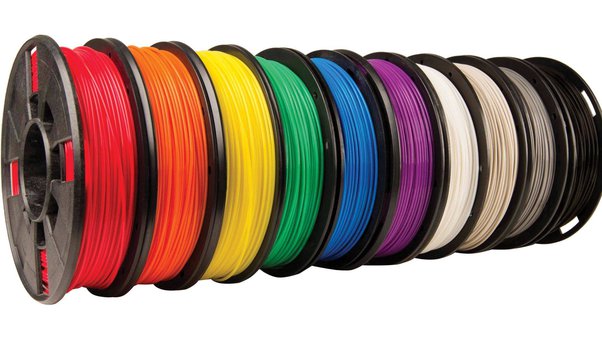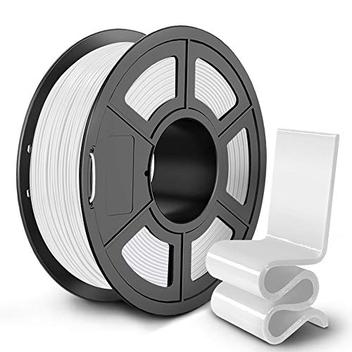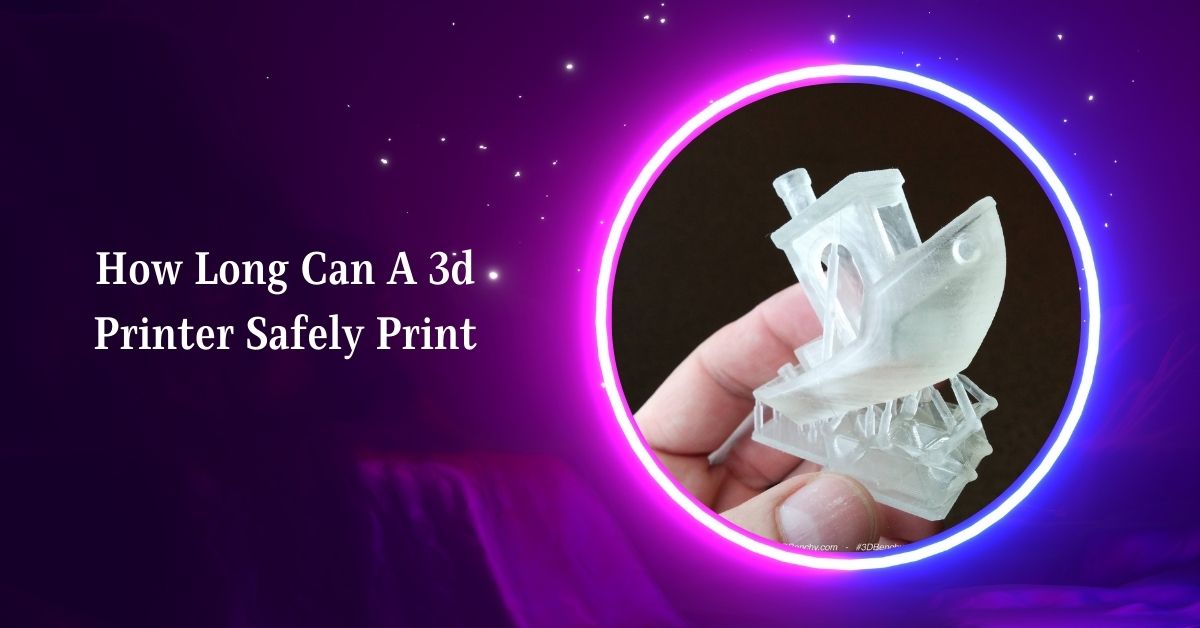3D printing has revolutionized how we create objects, allowing for endless customization and innovation. Among the various materials used in 3D printing, dishwasher-safe filaments are gaining popularity for their practicality and convenience.
In this comprehensive guide, we’ll delve into what makes a filament dishwasher safe, explore different types, and discuss their applications and benefits.
What Makes a Filament Dishwasher Safe?
Dishwasher-safe 3D printer filaments are designed to withstand high temperatures and harsh conditions inside a dishwasher without degrading. Key characteristics include:
- Heat Resistance: The filament must withstand temperatures typically found in dishwashers, which can exceed 60°C (140°F).
- Chemical Resistance: It should resist detergents and other chemicals used in dishwashing without losing integrity.
- Durability: The filament should maintain its structural integrity and not warp or deform during repeated wash cycles.
Types of Dishwasher Safe 3D Printer Filaments

Several types of filaments can be considered dishwasher safe, each with its unique properties and applications:
1. PETG (Polyethylene Terephthalate Glycol)
PETG is a popular choice for dishwasher-safe printing due to its excellent durability, chemical resistance, and ease of printing. It is less prone to warping than other filaments and offers a good balance of strength and flexibility.
- Pros: Durable, chemically resistant, easy to print, less warping.
- Cons: Slightly less rigid than other filaments, may require a heated bed for optimal results.
2. Polycarbonate (PC)
Polycarbonate is known for its high impact resistance and heat tolerance, making it an excellent choice for dishwasher-safe applications. It is stronger and more heat-resistant than PETG but can be more challenging to print with due to its tendency to warp.
- Pros: Extremely durable, high heat resistance, strong.
- Cons: Difficult to print, requires a high-temperature extruder and heated bed.
3. Nylon
Nylon is another robust and versatile filament suitable for dishwasher-safe applications. It boasts excellent impact resistance and flexibility, making it ideal for parts that require durability and toughness.
- Pros: High impact resistance, flexibility, durability.
- Cons: Prone to absorbing moisture, requires careful storage, and can be challenging to print.
4. Polypropylene (PP)
Polypropylene is a semi-rigid, lightweight filament with good chemical resistance and heat tolerance. It is often used in food-safe applications and can handle repeated dishwasher cycles without degrading.
- Pros: Lightweight, chemically resistant, good heat tolerance.
- Cons: It can be tricky to print and may require specialized printing conditions.
How to Choose the Right Dishwasher Safe Filament
Selecting the suitable filament for your project involves considering several factors:
- Application: Determine the specific use of the printed object. Kitchenware, medical devices, and toys may require different filament properties.
- Printer Compatibility: Ensure your 3D printer supports the temperatures and settings necessary for the filament.
- Post-Processing Needs: Some filaments may require additional post-processing to achieve the desired finish and durability.
Best Practices for Printing with Dishwasher Safe Filaments

To achieve the best results with dishwasher-safe filaments, consider the following tips:
- Printer Settings: Ensure your printer can handle the required temperatures for your chosen filament. A heated bed and enclosed build chamber can help prevent warping.
- Dry Storage: Filaments like Nylon are hygroscopic and absorb moisture from the air. Store them in a dry environment to maintain print quality.
- Adhesion: Use appropriate bed adhesives to prevent warping and ensure good first-layer adhesion.
- Post-Processing: Sanding and annealing can enhance the durability and heat resistance of printed parts.
Common Issues and Troubleshooting
When printing with dishwasher-safe filaments, you may encounter some common issues:
- Warping: Ensure proper bed adhesion and use a heated bed to minimize warping.
- Stringing: Adjust retraction settings to reduce stringing and achieve a cleaner print.
- Layer Adhesion: Ensure optimal printing temperature and proper cooling to improve layer adhesion.
Case Studies: Successful Dishwasher Safe 3D Prints
1. Kitchen Utensils
A designer created custom kitchen utensils using PETG filament. The utensils withstood multiple dishwasher cycles without any degradation, proving the material’s durability and practicality.
2. Medical Prototypes
A medical startup used polycarbonate filament to print prototypes of medical devices. The prototypes maintained their integrity after repeated sterilization in a dishwasher, demonstrating the filament’s suitability for medical applications.
Comparing Dishwasher Safe Filament to Regular Filament
When comparing dishwasher safe filaments to regular filaments, consider the following:
- Cost: Dishwasher safe filaments may be slightly more expensive.
- Performance: They offer better durability and heat resistance.
- Use Cases: Ideal for items that require regular cleaning.
Challenges and Considerations
While dishwasher safe filaments offer many benefits, there are some challenges:
- Potential Drawbacks: Limited availability and higher cost.
- Limitations: Not all 3D printers are compatible with these filaments.
- Future Developments: Ongoing research aims to improve the properties and reduce the cost of dishwasher safe filaments.
Future Trends in Dishwasher Safe Filaments

The development of new materials and improvements in 3D printing technology continue to expand the possibilities for dishwasher-safe filaments. Future trends include:
- Enhanced Biocompatibility: New filaments designed for medical applications will focus on biocompatibility and sterilization.
- Improved Printability: Advances in filament formulations will make dishwasher-safe filaments easier to print with, reducing common issues like warping and stringing.
- Sustainability: Eco-friendly, dishwasher-safe filaments made from recycled materials will become more prevalent.
FAQs
1. What is a dishwasher-safe 3D printer filament?
A dishwasher-safe filament can withstand high temperatures and detergents found in dishwashers without degrading, making printed items durable and easy to clean.
2. Which filaments are considered dishwasher safe?
Due to their heat resistance, chemical resistance, and durability, PETG, polycarbonate (PC), nylon, and polypropylene (PP) are common dishwasher-safe filaments.
3. Can PLA filament be dishwasher safe?
Standard PLA is not dishwasher safe as it can deform at high temperatures. However, some modified PLA filaments with enhanced properties may be more resistant.
4. How do I ensure a good print with dishwasher-safe filaments?
Use appropriate printer settings, ensure good bed adhesion, store filaments in dry conditions, and consider post-processing like sanding or annealing for improved durability.
5. Are dishwasher-safe filaments food safe?
Some dishwasher-safe filaments, like specific grades of PETG and Polypropylene, can be food-safe. Verify with the manufacturer if the filament is certified for food contact.
6. What are the applications of dishwasher-safe filaments?
They are ideal for kitchenware, medical devices, toys, and household items that require frequent cleaning and durability against harsh conditions.
7. Is printing with Polycarbonate complex?
Polycarbonate can be challenging to print due to its high melting temperature and tendency to warp. It requires a high-temperature extruder, a heated bed, and sometimes an enclosed build chamber.
8. Can I print large objects with dishwasher-safe filaments?
Yes, but large objects are more prone to warping. Ensuring proper bed adhesion, controlled cooling, and sometimes an enclosed build chamber can help mitigate this issue.
9. How do I store dishwasher-safe filaments?
Store in a cool, dry place. Hygroscopic filaments like Nylon should be kept in airtight containers with desiccants to prevent moisture absorption, which can affect print quality.
10. What future trends are expected for dishwasher-safe filaments?
Future trends include enhanced biocompatibility for medical uses, improved printability to reduce common issues, and eco-friendly options made from recycled materials.
Conclusion
Dishwasher-safe 3D printer filaments offer a practical solution for creating durable, reusable, and easy-to-clean objects. Whether you’re printing kitchenware, medical devices, or everyday household items, understanding the properties and applications of these filaments can help you choose the suitable material for your needs. With the right filament and proper printing techniques, you can produce high-quality, dishwasher-safe prints that stand up to the rigors of daily use.










